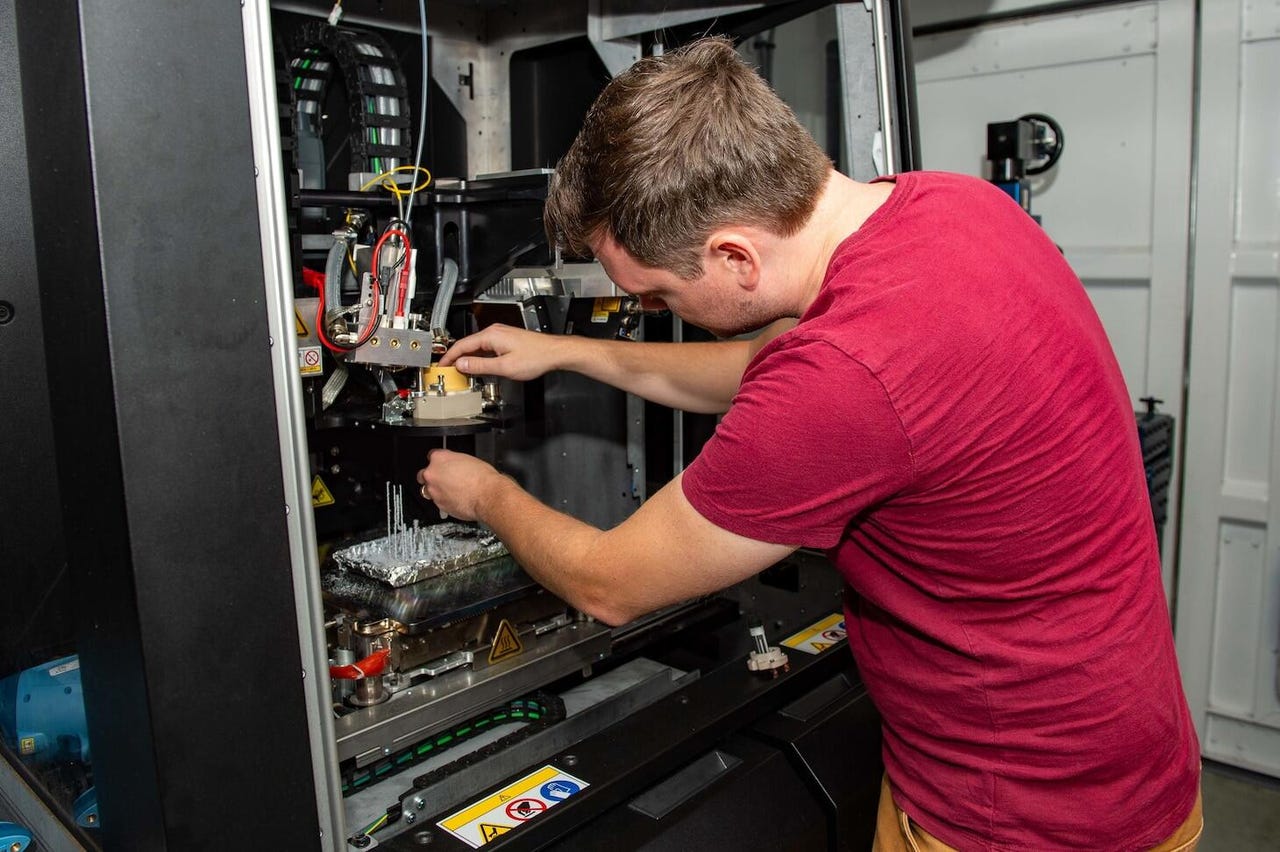The US Navy is testing a 3D printer on a ship out at sea


The US Navy has installed a 3D printer on its Wasp-class amphibious assault ship USS Essex to test the viability of the technology when out at sea.
USS Essex is the first ship to evaluate a 3D printer in conditions at sea.
Innovation
"Having this printer aboard will essentially accelerate, enhance and increase our warfighting readiness," said Lt. Cmdr. Nicolas Batista, the Aircraft Intermediate Maintenance Department (AIMD) officer aboard Essex.
SEE: This device recycles plastic water bottles into 3D printing filament (and it's open source)
Onboard installation and tests were carried out on USS Essex on July 9 with 3D printer vendor Xerox. This was during the Rim of the Pacific (RIMPAC) 2022 26-nation training event around the Hawaiian Islands and Southern California between June 29 and August 4.
Components that can be printed on the ship include heat sinks, housings, fuel adapters, bleed air valves, valve covers and more, according to a US Navy news release.
Batista notes that the Navy's 3D printer is one of the fastest on the market, capable of fabricating and printing aluminum up to 10-inches by 10-inches.
"The capabilities of the 3D printer will enable Essex to become more self-sufficient," said Batista.
Soon, the Navy will start training sailors to use the 3D-printing equipment.
According to Xerox, the USS Essex installed the Xerox ElemX liquid metal printer, which is based on the Xerox Elem Additive.
"The military supply chain is among the most complex in the world and putting the ElemX on USS Essex means that sailors can now bypass that complexity and print parts when and where they need them," said Tali Rosman, general manager of Elem Additive.
Xerox ElemX uses uses standard aluminum wire rather than metal powders that can be hazardous. Xerox claims the printer doesn't need to be modified for a facility and users don't need to wear personal protective equipment to operate the machine.
However, to protect the ElemX while at sea, it was installed in an industrial shipping container. The trials so far have looked at establishing operational guidelines and technical feasibility studies to determine applications and use cases.
A team on USS Essex will design and print shipboard items and provide feedback to the Naval Postgraduate School (NPS), which installed an ElemX last year. NPS is the Department of the Navy's applied research university.
NPS installed the ElemX to prepare its military students to "examine novel approaches to create, make, prototype and manufacture capability wherever they are."